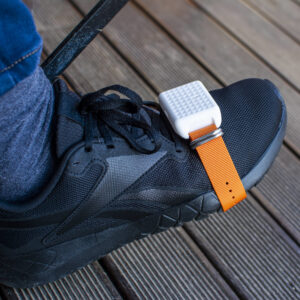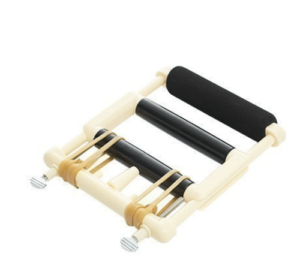We asked Zhey Grudov – inventor of the Hands-Free Mouse for some tips and tricks for living with Repetitive Strain Injury:
As an IT consultant and Inventor who suffers from Repetitive Strain Injury (RSI), I know firsthand how debilitating this condition can be. RSI is a painful and frustrating condition affecting your arms, hands, and fingers. It is often caused by repetitive motion and can make it very difficult to perform everyday tasks, including working on a computer. In my early twenties, I had to resign from my IT consultant work because of the extreme pain this condition caused me.
If you are struggling with RSI, I want to share some tips and tricks that I have discovered to ease the pain and continue working comfortably and sustainably. These are not just theoretical recommendations, but proven strategies that have helped me manage my condition.
Change Your Work Habits
Take Regular Breaks
Taking regular breaks is essential to prevent RSI from worsening. Try to take a break every 30-45 minutes and stretch your arms and hands. This will help relieve tension and promote blood flow.
Use Ergonomic Equipment
Using ergonomic equipment can make a significant difference in reducing RSI pain. An ergonomic keyboard, mouse, and chair can help keep your arms and hands in a natural position, reducing the strain on your muscles. Some examples:
Ergonomic Keyboard: A keyboard with a split design or a contoured shape can help reduce the strain on your wrists and arms.
Ergonomic Mouse: A mouse with a contoured shape can help reduce the strain on your hand and wrist.

Or, a wearable mouse like Feathertail will significantly reduce the pain from RSI and help with recovery by changing the biomechanics of the repetitive motions you do and giving your body time to recover.
Wrist Rest: A wrist rest can help support your wrists and reduce the strain on your hands and arms.
Voice Recognition Software: Software such as Dragon NaturallySpeaking can allow you to control your computer using voice commands, reducing the need to use a keyboard or mouse.

Grip Strengthener: A grip strengthener can help improve hand strength and dexterity, making it easier to grip objects.
Adjustable Desk: An adjustable desk allows you to switch between sitting and standing positions, reducing the strain on your back, neck, and arms.

Adjust Your Posture
Ensure that your arms and hands are in a comfortable position, and your shoulders are relaxed. Avoid slouching or leaning forward.
Exercise
An appropriate exercise regime for your level of fitness helps prevent RSI in multiple ways. If you already feel pain consult a personal trainer who understands RSI, to work out a personal exercise routine. Exercise has been impactful for me, second only to rest and adjusing my workflow.
Heat or Cold Treatment
Both icing and hot water can alleviate pain in the short term. It might be worth experimenting with both. You can try microwave-heated packs, hot water bottles or bags of crushed ice for example.
Alternative Therapies
Several alternative treatments can help alleviate RSI pain. These include acupuncture, massage therapy, and chiropractic care. I have personally not noticed a lot of benefits from them, however, other people have been helped by them so they might be worth investigating.
Find what works for you
RSI can be a challenging condition to live with, but there are many strategies and treatments available that can help alleviate pain and make daily life more manageable. By changing your work habits, trying alternative treatments, using adaptive equipment, and exercising regularly, you can reduce your RSI pain and maintain a healthy and productive lifestyle.
Remember, what works for one person may not work for another. It’s essential to find the products that work best for you and your specific needs.
Visit Zhey’s website for more info about the “The wearable ergonomic mouse.”
Here are some more RSI tips
From the users of Reddit:
- Rest: Resting is crucial for recovery, even though it can be challenging when hobbies and work involve using the arms. Finding hobbies that do not strain the wrists, such as walking, hiking, board games, gardening (light only), audiobooks, podcasts, and art galleries, can be helpful.
- Reducing work hours: Taking time off or reducing work hours, such as taking Wednesdays off, can provide a day of rest in the middle of the week and aid in recovery.
- Proper computer setup: Ensuring the computer setup is ergonomically correct, such as using a split keyboard, vertical mouse, and swapping between a mouse and an Apple trackpad, can help reduce strain on the wrists.
- Dictation: Learning to use dictation for tasks that involve typing, such as replying to emails, can help reduce strain on the wrists and enable continued work while recovering.
- Handwriting recognition on a tablet: Using handwriting recognition on a tablet instead of typing can help break up the repetition and strain on the wrists.
- Flexible arm stands for phones and e-readers: Using flexible arm stands for phones and e-readers can help avoid holding them for long periods and reduce strain on the wrists.
- Physiotherapy and occupational therapy: Both physiotherapy and occupational therapy can address different aspects of the problem and aid in recovery.
- Acupuncture and massage: Acupuncture and massage therapy can provide additional relief and aid in recovery, although they may be costly.
- Yoga: Yoga, especially restorative yoga and yin yoga, can be beneficial for strengthening and stretching, and can be adapted to avoid strain on the wrists.
- Wrist braces: Finding the right type of wrist braces, such as a more flexible style during the day and a more firm style for sleeping, can make a difference in managing the condition.
- Taking care of the whole body: Recognizing that the condition may be connected to other parts of the body, such as the shoulders and neck, and taking care of the whole body can be important for overall recovery.
More on Disability Horizons:

